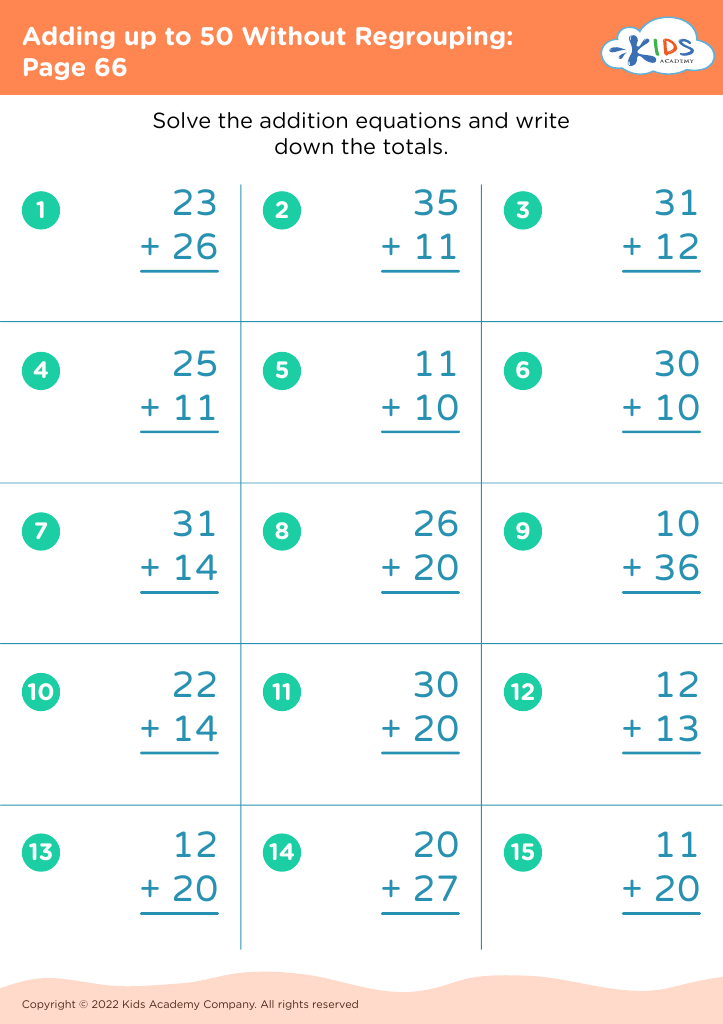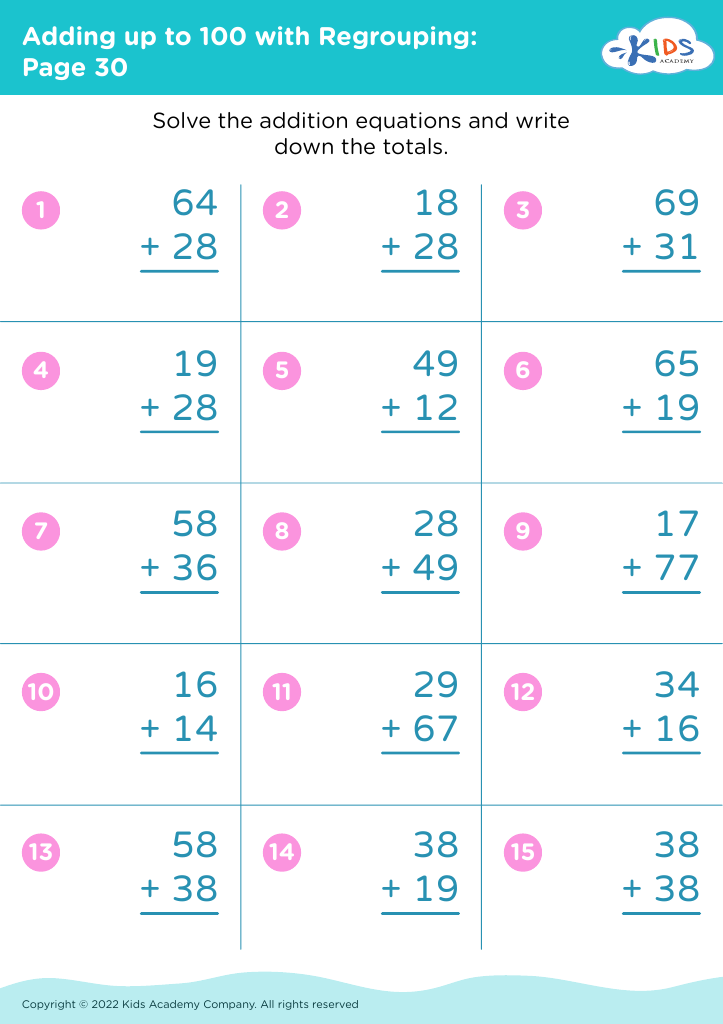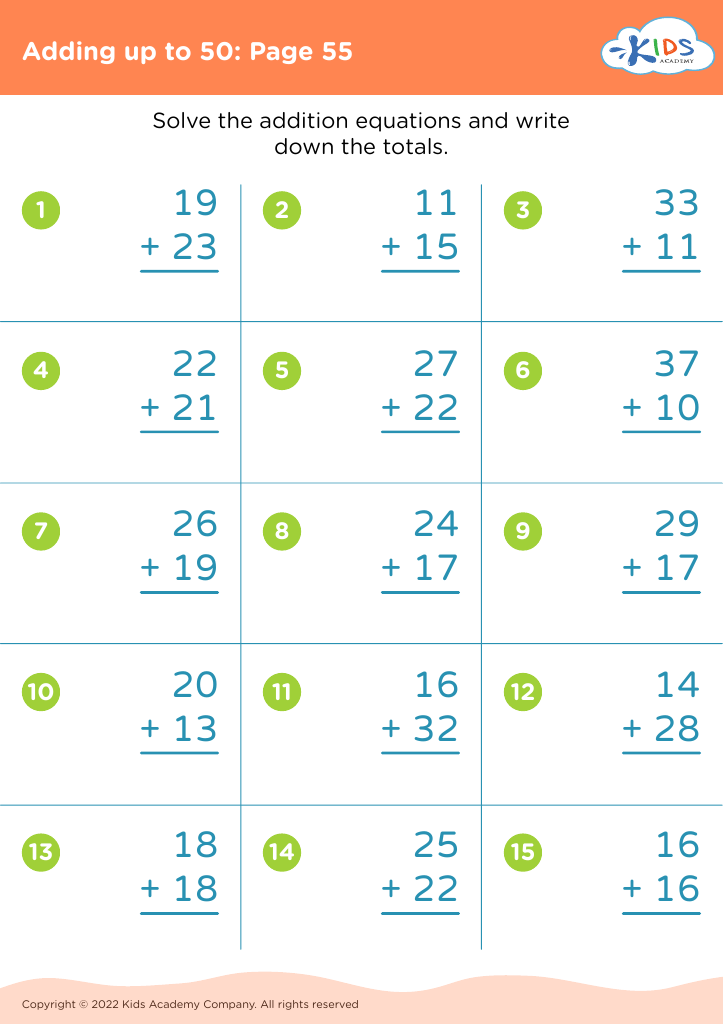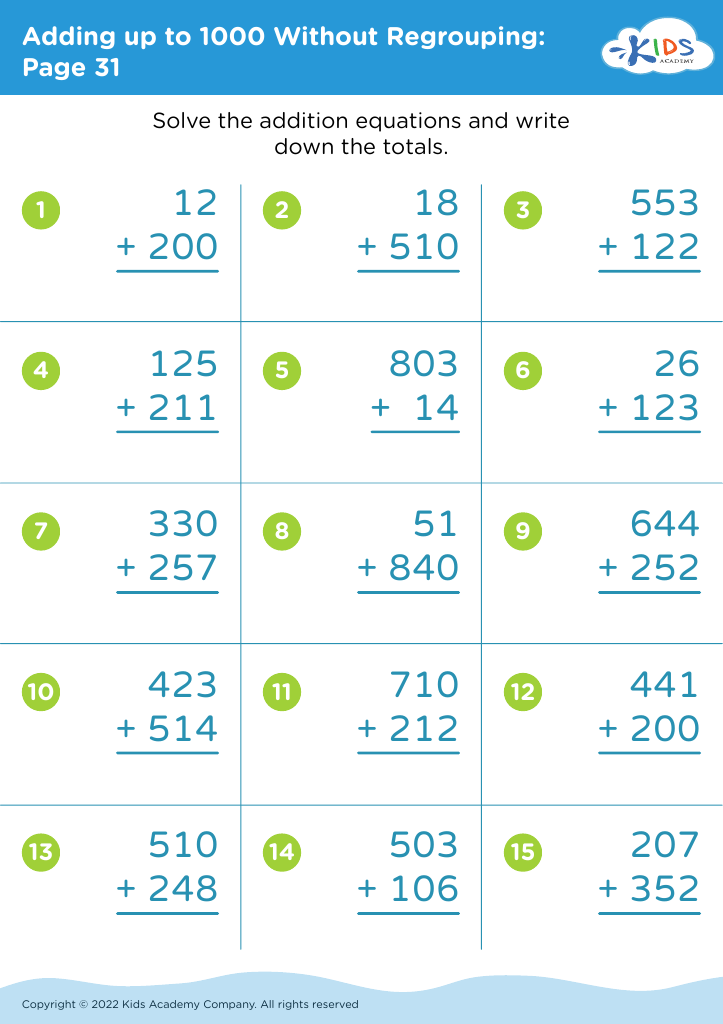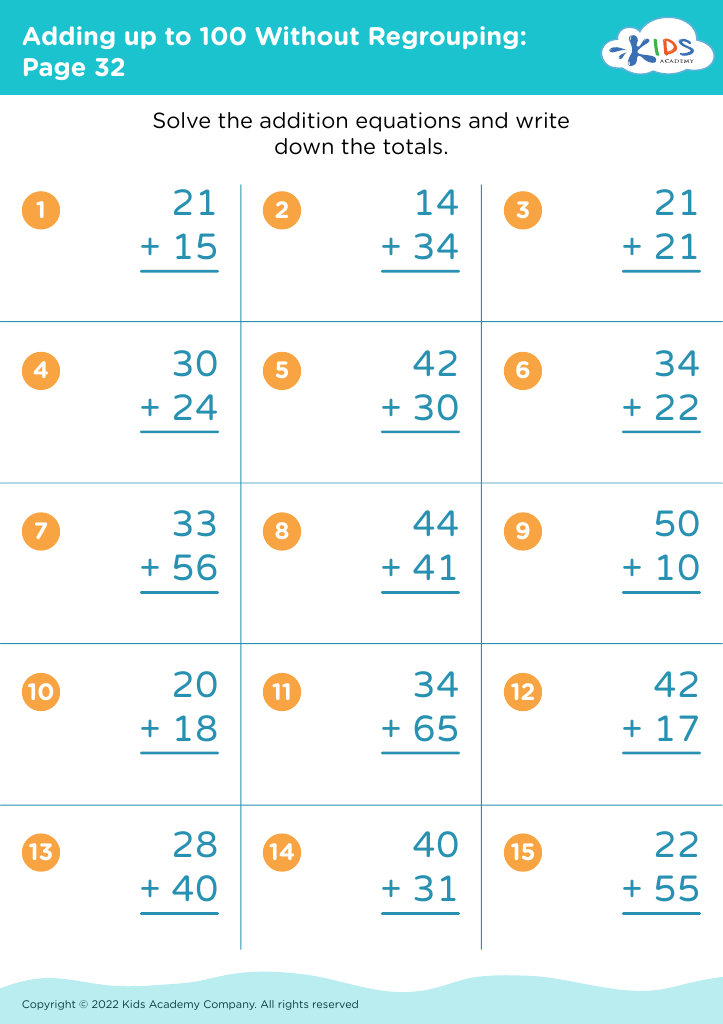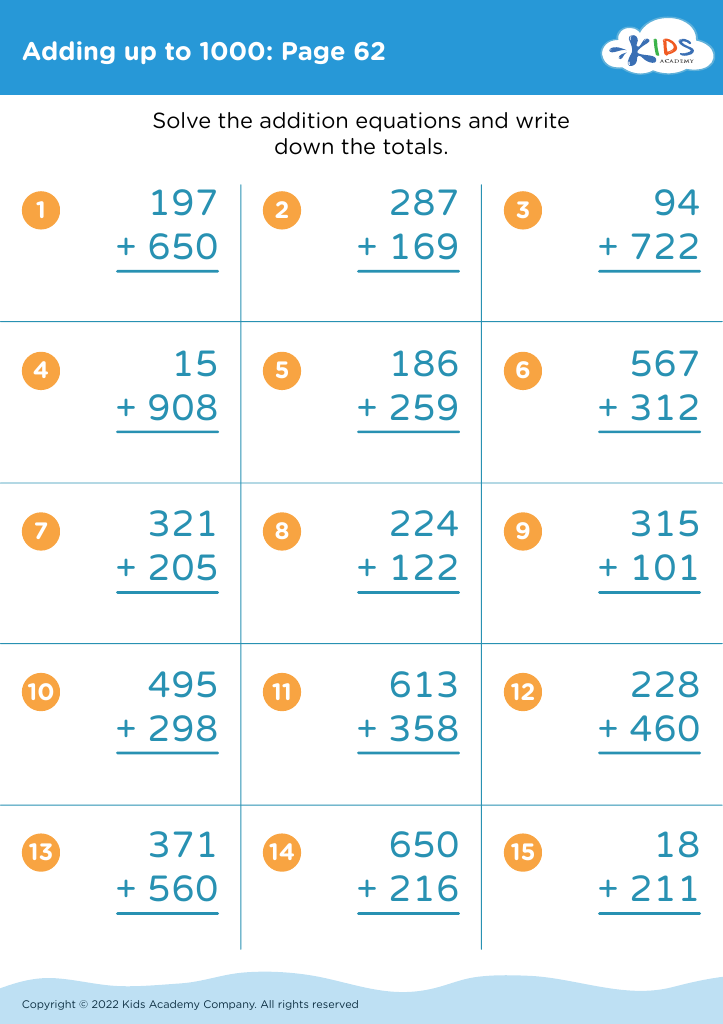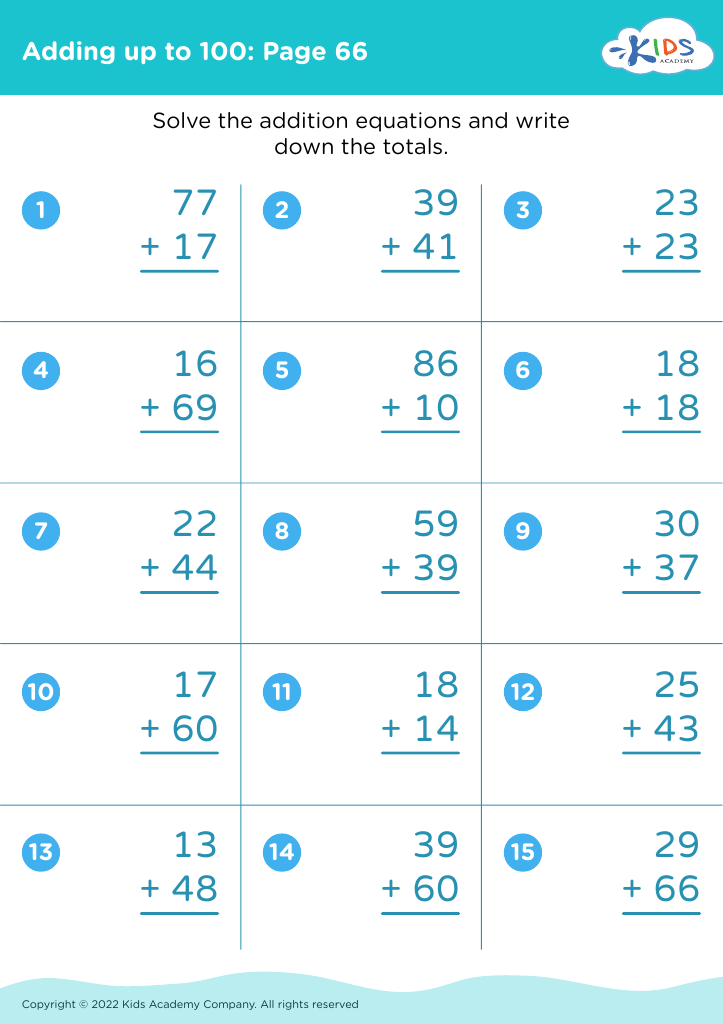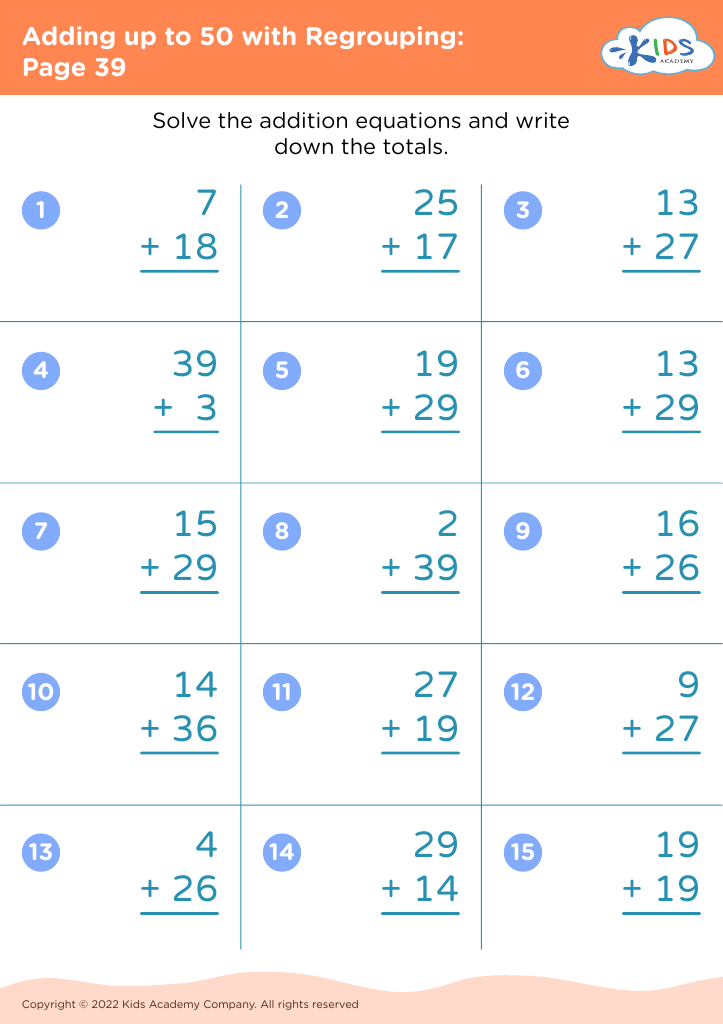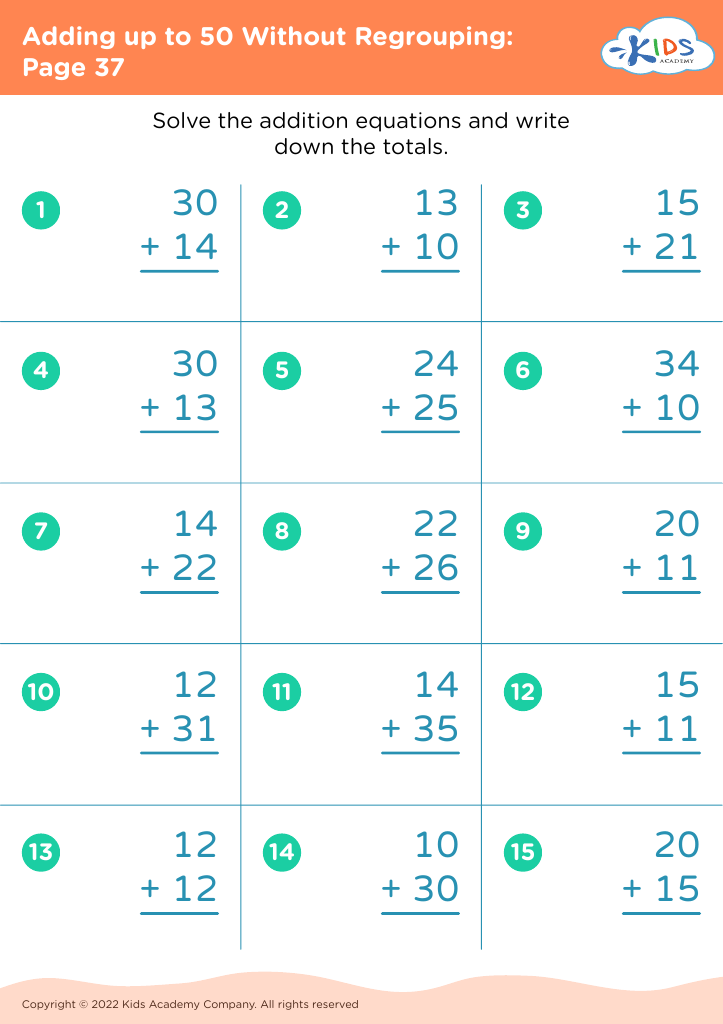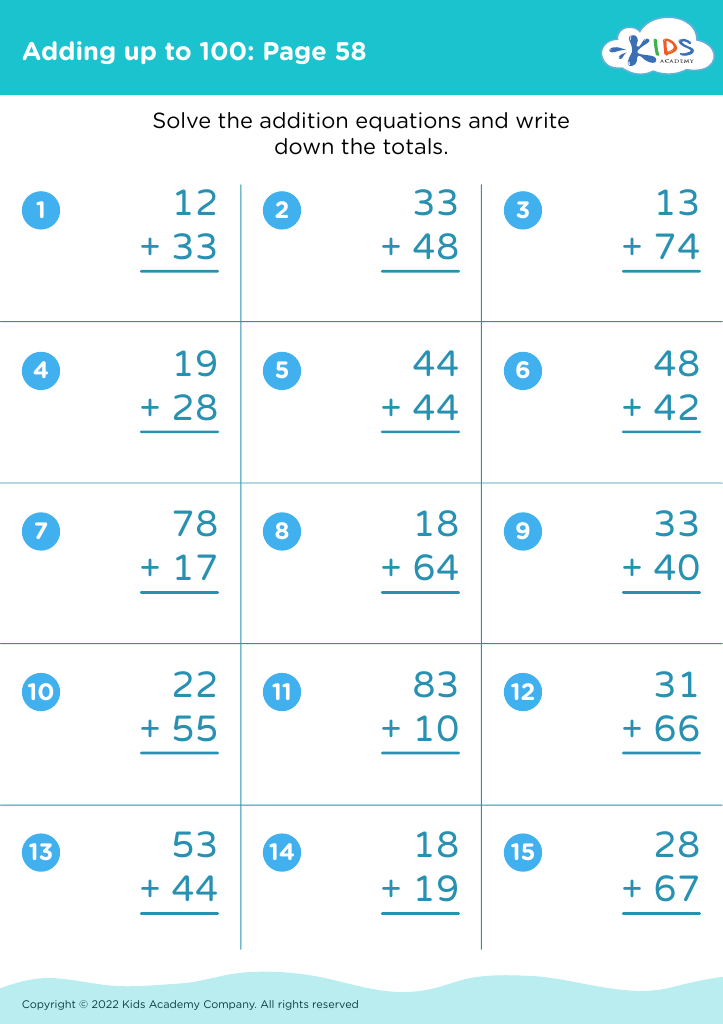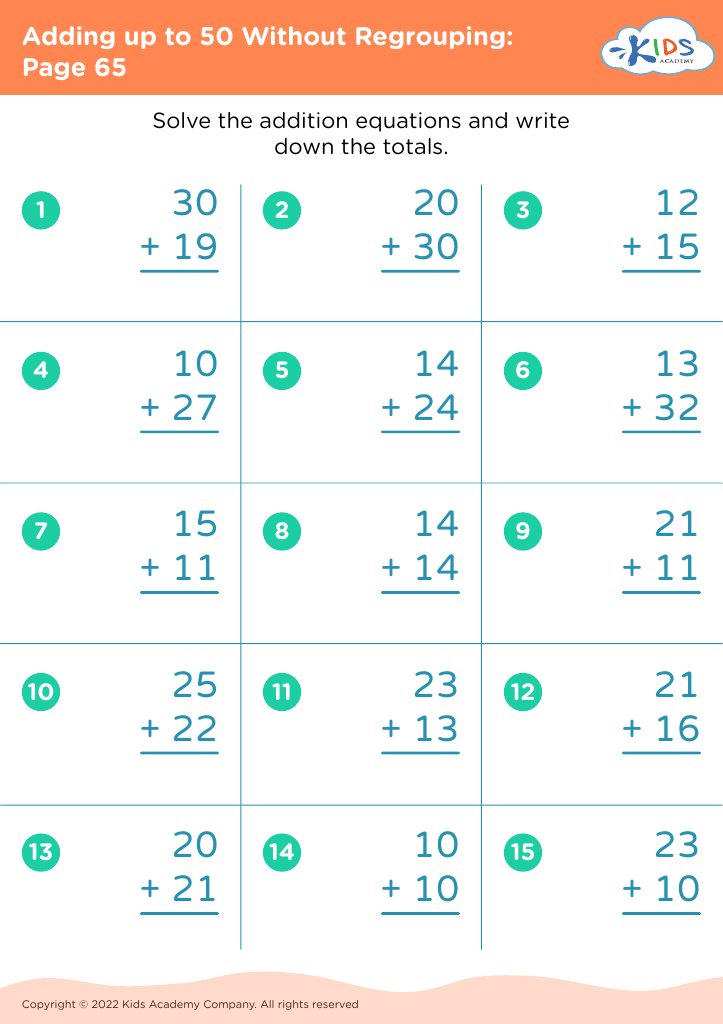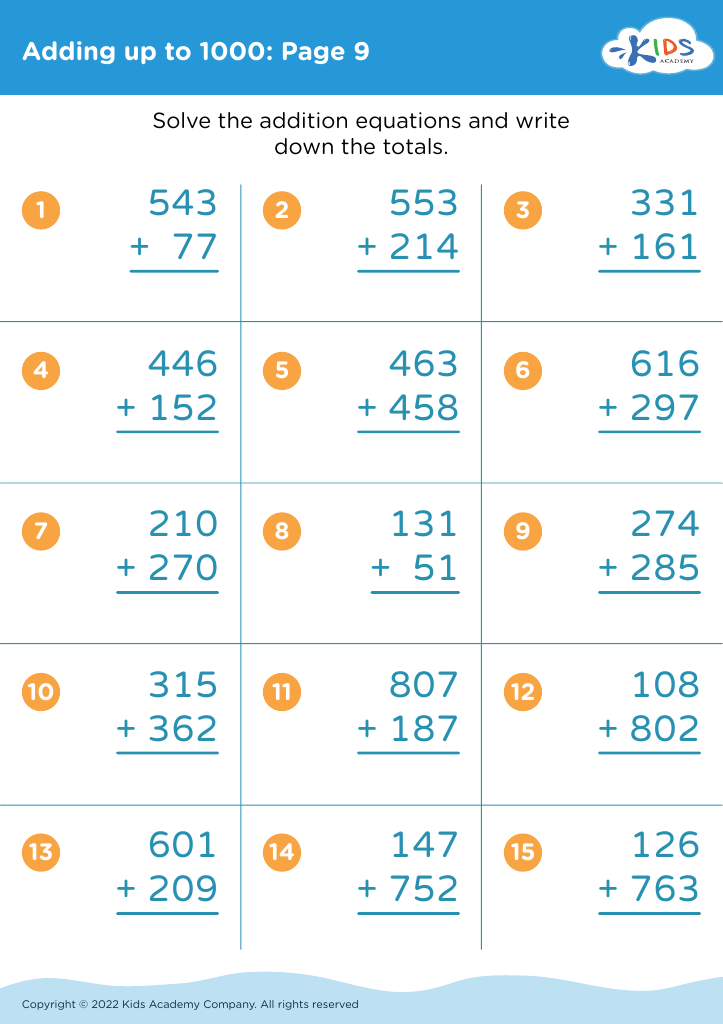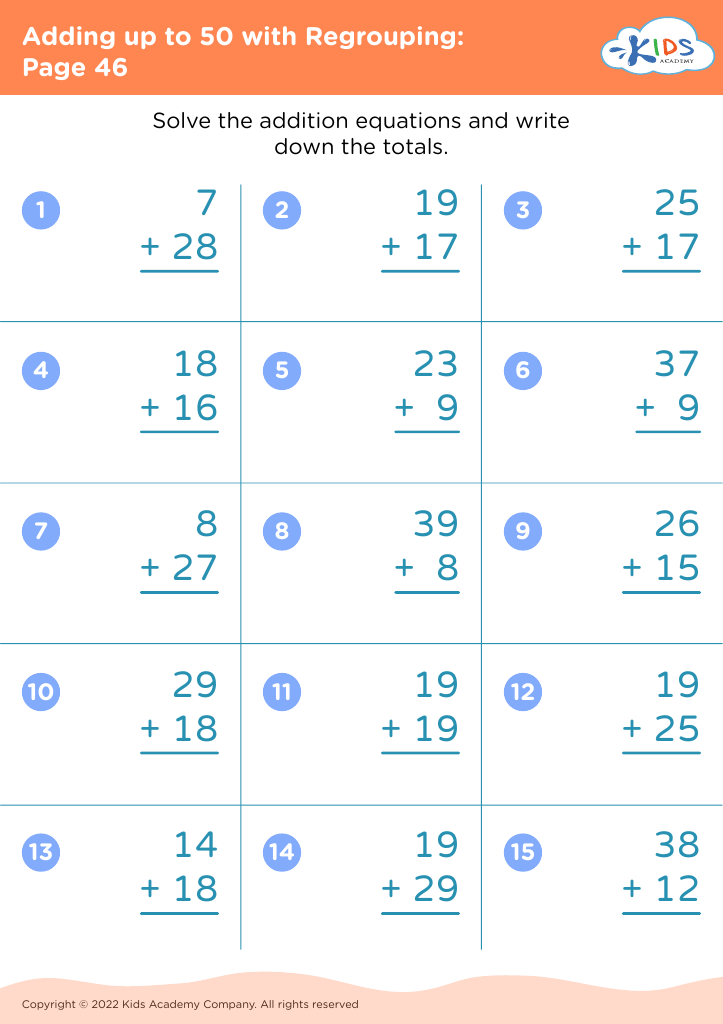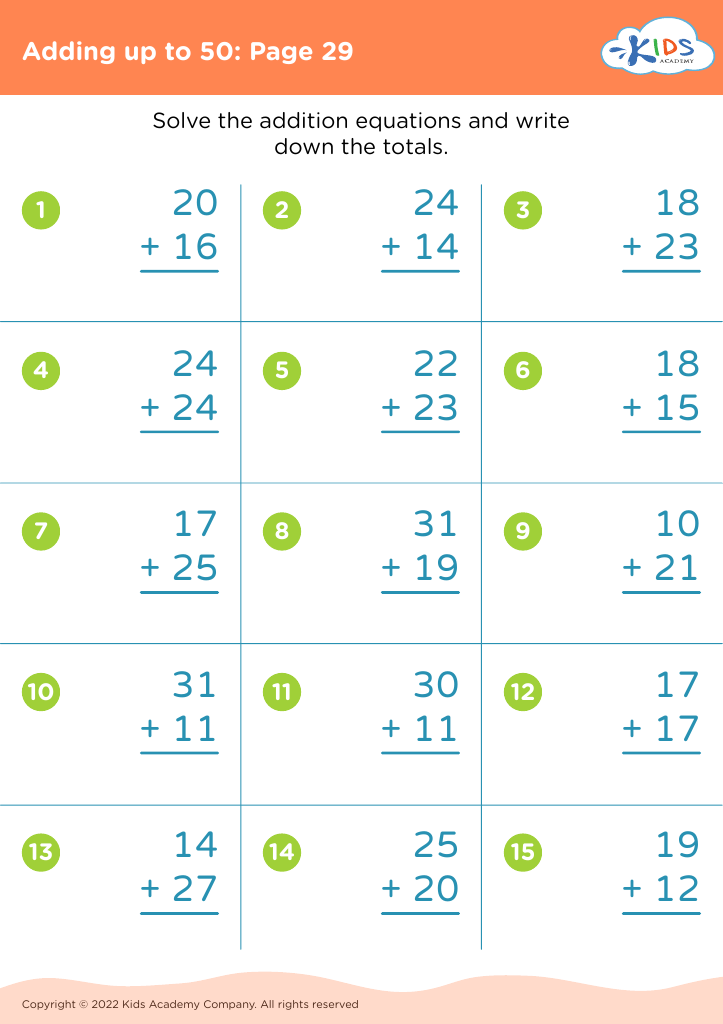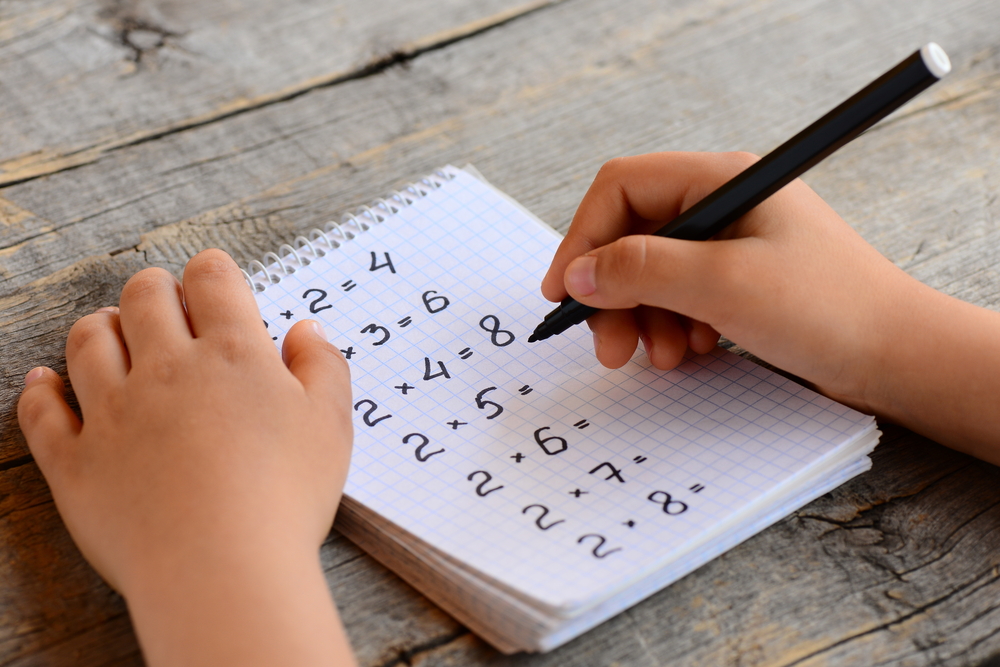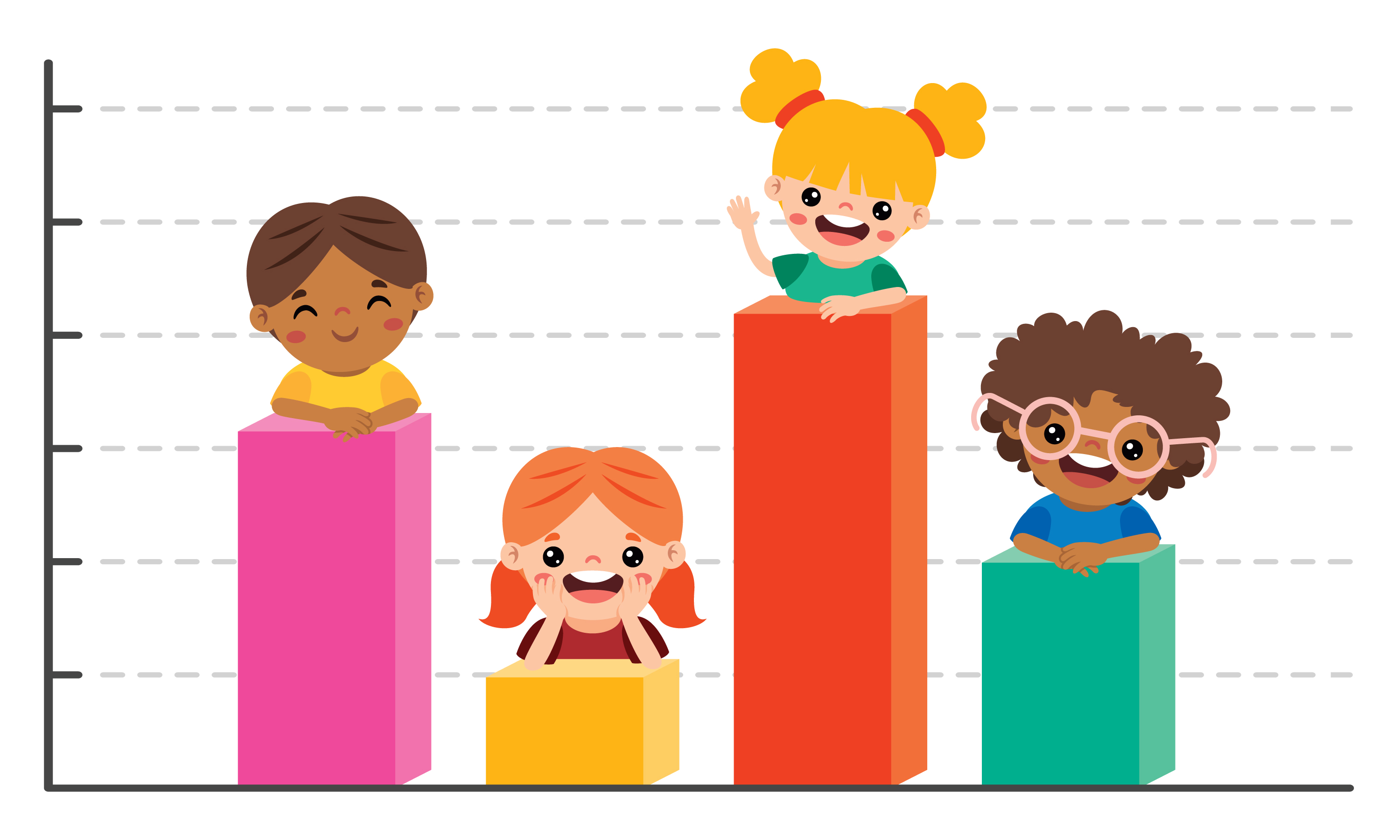Understand fractions Addition Worksheets for Ages 6-7
19 filtered results
-
From - To
Unlock the world of fractions with our engaging Fraction Addition Worksheets designed specifically for students aged 6-7! These printable resources encourage young learners to grasp the fundamentals of adding fractions through playful and interactive activities. Our worksheets provide various exercises that align with learning objectives, ensuring your child develops a solid understanding of this essential math concept. Ideal for classroom use or at-home practice, these exercises promote hands-on learning and foster confidence in approaching math challenges. Help your child master fraction addition while building a strong foundation for future math success with our engaging and accessible worksheets!
Understanding fractions and addition is crucial for children aged 6-7, as it lays the foundation for their overall mathematical development. At this age, children begin to grasp basic concepts of quantity, division, and part-whole relationships, which are fundamental when dealing with fractions. By mastering fractions, children learn to identify parts of a whole, which helps them engage in real-life applications like cooking, sharing, and measuring, making math more relevant and engaging.
Moreover, incorporating addition with fractions strengthens their problem-solving skills. For example, when adding fractions, children learn to recognize common denominators and combine parts with different units, enhancing their critical thinking and comprehension abilities. This dual focus bridges their budding understanding of addition and the concept of fractions, promoting cognitive growth.
Furthermore, early exposure to fractions fosters confidence in math, reducing anxiety associated with more complex mathematical concepts later on. It cultivates a positive mathematical mindset and encourages a love for learning, setting the stage for future academic success. Thus, parents and teachers play an essential role in supporting this crucial aspect of mathematics, ensuring a well-rounded education for their children.
